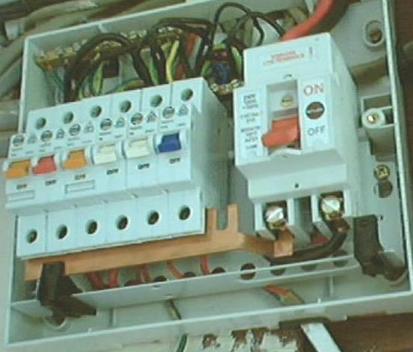" we had to snip the main 100A FUSE security tab to get it out. "
No, you did not, the last owners of the house must have done it!!

No, you did not, the last owners of the house must have done it!!
mapj1 said:If it really is 100 times slower than the 100watt lightbulb, at 5mA its probably the meters own consumption, and nothing to worry about.
Now we are getting more information! When you say you recently changed the board, I am assuming that you carried out all the necessary testing ie. loop impedance, R1+R2, Ze, Insulation, RCD times etc of each circuit as you went? How experienced are you as this is not normally a recommended DIY job and can you be sure you have carried it out correctly? A faulty meter is less likely than a fault introduced fitting a new CU without proper testing.
That's almost complete b****cks.BJS_Spark said:A faulty meter is less likely than a fault introduced fitting a new CU without proper testing.
Thanks for that rudeness BAS!ban-all-sheds said:That's almost complete b****cks.
Don't know about anyone else on here but I can think of hundreds of ways of introducing a fault when changing a CU if done badly!!ban-all-sheds said:But introducing a fault simply by changing a CU? How so?
Surely you do mean the tops of the MCB's dazzler??dazzlerpalmer said:It is a split board. All the lives (reds) are going into the bottoms of the MCBs, the neutrals (blacks) are in the appropriate N blocks.
Don't be so precious..BJS_Spark said:Thanks for that rudeness BAS!ban-all-sheds said:That's almost complete b****cks.
Hundreds! Blimey...Don't know about anyone else on here but I can think of hundreds of ways of introducing a fault when changing a CU if done badly!!ban-all-sheds said:But introducing a fault simply by changing a CU? How so?
Unless this is his board:Possibly...
Surely you do mean the tops of the MCB's dazzler??dazzlerpalmer said:It is a split board. All the lives (reds) are going into the bottoms of the MCBs, the neutrals (blacks) are in the appropriate N blocks.



OK - come on then - let's have your list of hundreds of faults that you could introduce downstream of a CU by simply replacing a CU.BJS_Spark said:Surely the point is you only need to introduce one minor fault to create a dangerous installation, which on a job like changing a CU is more likely to effect the installation as a whole.
If you need to find a tradesperson to get your job done, please try our local search below, or if you are doing it yourself you can find suppliers local to you.
Select the supplier or trade you require, enter your location to begin your search.
Are you a trade or supplier? You can create your listing free at DIYnot Local
